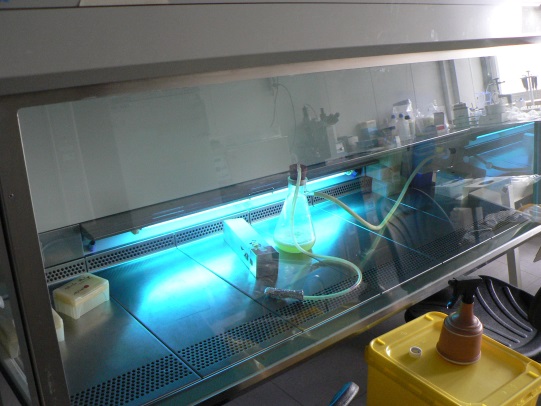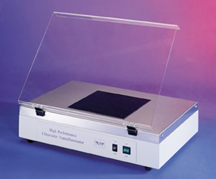Harmful UV radiation sources
Examples include:
Germicidal lamps for sterilisation
- emit hazardous UVC radiation at 254nm (when new and kept clean!)

Transilluminators
- emit hazardous UVB radiation at 297 nm
- particularly hazardous because they emit the radiation upwards whilst the researcher is looking down
- one of the common applications for transilluminators involves the user leaning closely over the transilluminator to cut gels
- measurements report time-to-exposure limit-values of about 40 seconds, showing the importance of taking precautions to prevent or reduce exposure

Outdoor work
- outdoor work in the summer can lead to excessive UV exposure
- UV-A and UV-B rays, unlike UV-C rays, are not filtered by air and therefore, on sunny days, can be of a sufficient intensity to cause skin and eye damage over a short period of time.
- in high altitudes and the Arctic, where the atmosphere is thinner, the intensity of UV radiation will be considerably higher
- snow and water reflect UV rays, increasing their effects further
- workers should cover up or use a high factor sun cream
- SPF factor indicates degree of protection: SPF of 4 reduces exposure to ¼, SPF of 10 reduces exposure to 1/10
- head and neck of outdoor workers most likely areas to develop nonmelanoma skin cancer
Arc welding
- adventitious UV is generated by arc welders and these areas must be well screened for unprotected workers
Printing and curing
- other processes such as printing and curing use various UV wavelengths
Sunbeds for cosmetic tanning & the treatment of psoriasis
- use predominantly UVA wavelengths but fast-tanning units use more UVB
- excessive use is not recommended
- people with sensitive skin types are advised not to use them
- over use can lead to premature skin ageing and an increased risk of skin cancer
Disco lights - nickel/cobalt oxide glass (wood's glass)
- emits UVA
- only emit low levels of UVA radiation within acceptable limits
